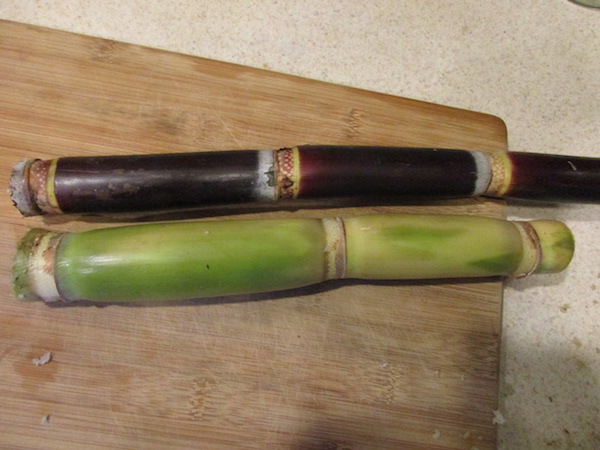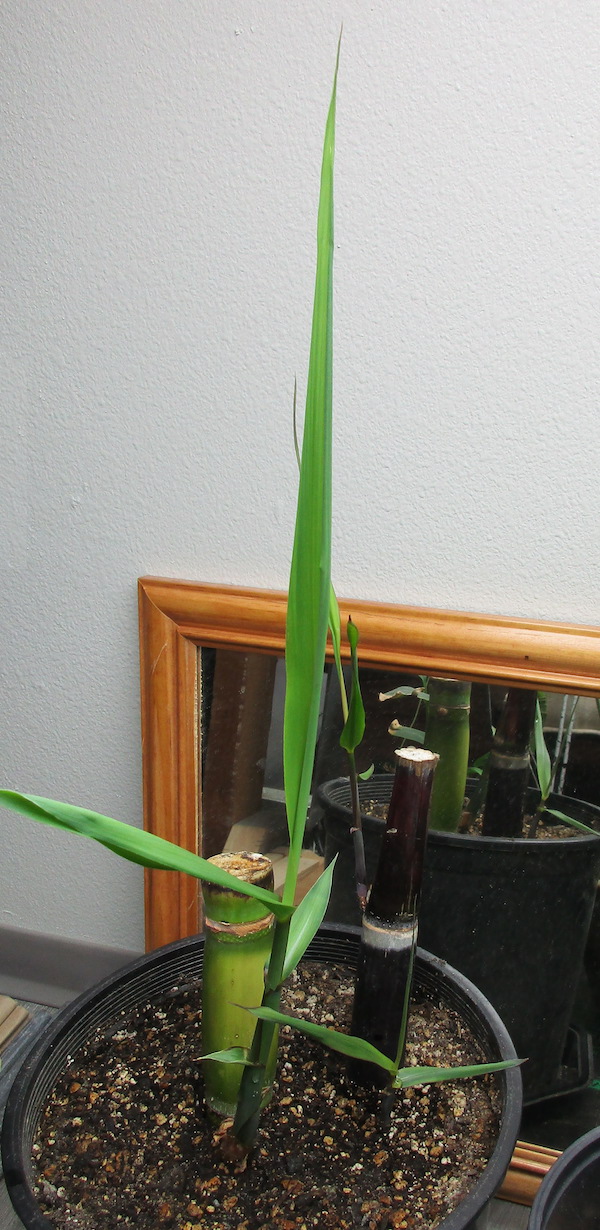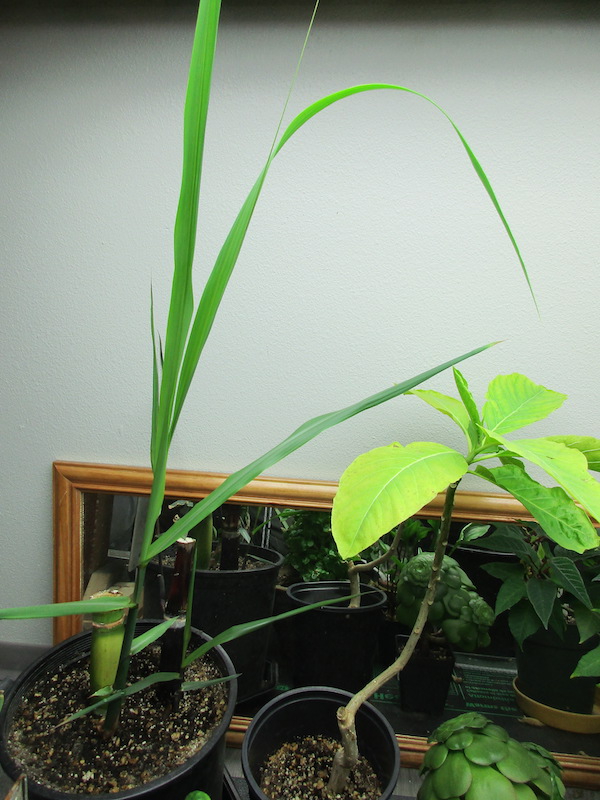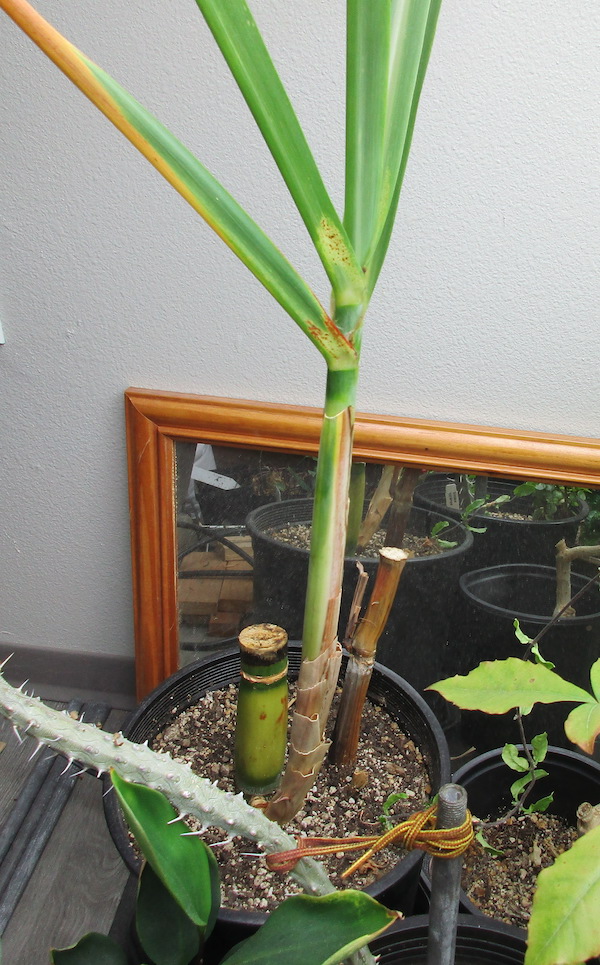Plant of the Month: February 2019
|
| Sugar Cane houseplant Saccharum officinarum L. |
GRAMINEÆ ; Grass Family
|
| You can grow your own sugar indoors, at least a little of it. The Sugar Cane is a bamboo-looking large tropical grass that is often sold in its raw, bare cane form, in food markets. On December 4th, I bought two such pieces for $1.71 at a Seattle grocery store, stuck them in water, and watched them send out roots. By and by, I potted them in soil, and have been watching them grow new leafy shoots. [I do not own a televison, so watching sugar grow staves off boredom.] It's not that I desire home-grown sugar. Rather, I am learning first-hand to help me write a better Edible Houseplants book. |
| Saccharum officinarum is a domesticated hybrid, originally from New Guinea. Now, by weight, it is earth's number one food crop annually. In recent years, cane sugar has come to be viewed with disdain as the very symbol of empty calories, obesity, tooth decay, and encouraging diabetes. Dentists should love it. |
| The canes, at least in tropical sun, can grow 20 feet tall, and are singularly heavy with moisture. The canes are harvested and squished to obtain the juice. It is then evaporated to obtain the sugar crystals. This product is added to an astonishing number of foods, the gamut from traditional as apple pie, to processed as much as soft drinks. The raw sugary juice can eaten out of hand (chewy with much fiber, and sweet but without distinctive flavor) or converted into molasses, syrup, wine, rum, or distlled alcohol. Papuans on New Guinea have a mutant with cauliflower-like flower clusters used as a vegetable. The seeds have been eaten, too. But the plant flowers only in the tropics. |
| Genus Saccharum has 35 - 40 species, and at least 8 have been reported eaten by humans. There are even a few that are ornamental, with colorful stems or foliage. 'Red Candy Stripe' is such a one. |
| To make the plant thrive in a pot indoors, give it steady warmth and moisture, with artificial light unless you have an extraordinary sunny window. With less than ideal conditions, it can still grow. After all, some clones are root-hardy in frosty climate zones. |
In my view, given the end-product of a bit of home-grown sugar, the plant is not attractive enough, small enough, or productive enough to bother growing inside. The leaf edges are also razor sharp. But it is fun, and children may delight in it.
Back |

Sugar Canes Dec. 4th ; photo by ALJ
|

Sugar Canes Jan. 19th ; photo by ALJ
|

Sugar Canes Feb. 4th ; photo by ALJ
|

Sugar Canes Feb. 17th ; photo by ALJ
|

Sugar Canes March 6th ; photo by ALJ
|

Sugar Canes July 22nd ; photo by ALJ
|

Sugar Canes Nov. 19th ; photo by ALJ
|

Sugar Cane uprooted ; photo by ALJ
|
|
|

